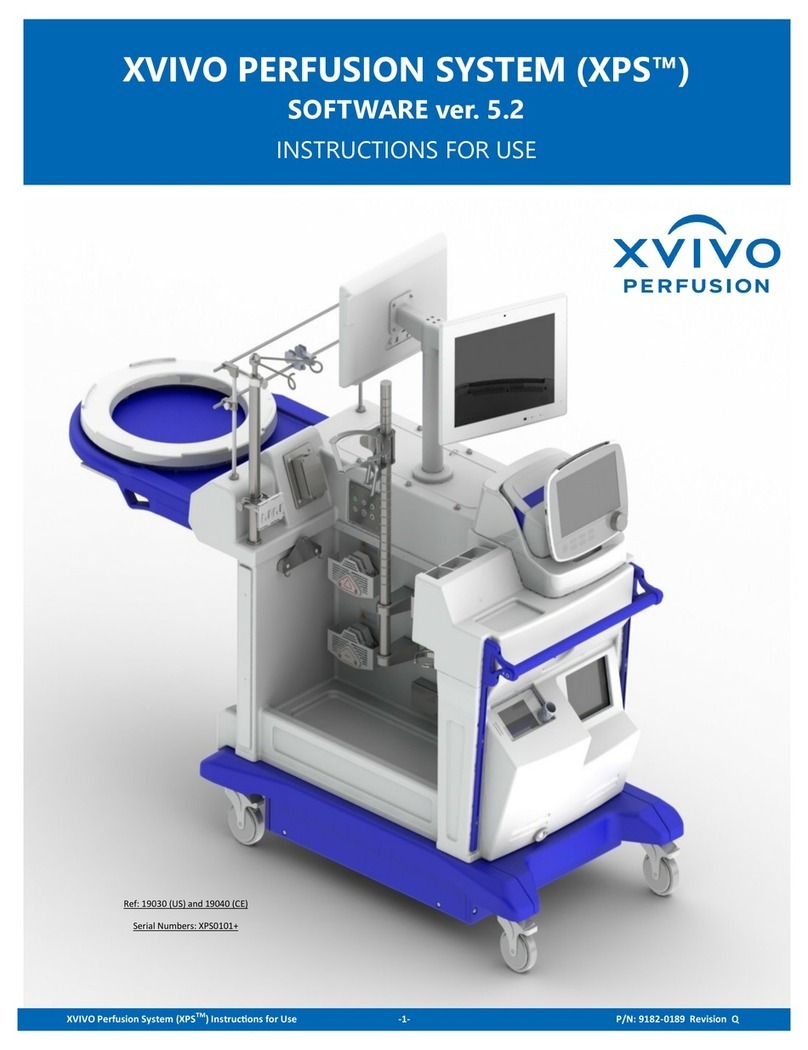11.01.601.7c EN Page 5 of 40
The Liver Assist is intended to be used for isolated temperature controlled ex-situ
oxygenated machine perfusion of donor livers, for a period up to 6 hours.
The Liver Assist is intended for use by trained professionals in a professional healthcare
environment. Users are expected to be familiar with standard medical practices as required
for organ perfusion. There are two types of users of the device
•sterile surgeon, he/she connects the organ to the subsequent tubing of the
disposable set and determinesthe perfusionconditions. After perfusion the surgeon
checks the organ on quality for transplantation and removes the organ from the
device.
•non-sterile perfusionist, he/she prepares the device for use, places and primes the
disposable system, and operates the device during the perfusion period. After
perfusion the perfusionist cleans the device.
Indications for use
Indications for use of the Liver Assist include in-hospital machine perfusion of donor livers
from all deceased donor types as hypothermic to normothermic to preservation instead of
static cold storage or reconditioning after static cold storage, with the intention to improve
transplantation outcome of standard criteria donor livers, or to assess viability of extended
criteria and eligible for discard donor livers.
Figure 2: Front and rear view of the pump units.




























